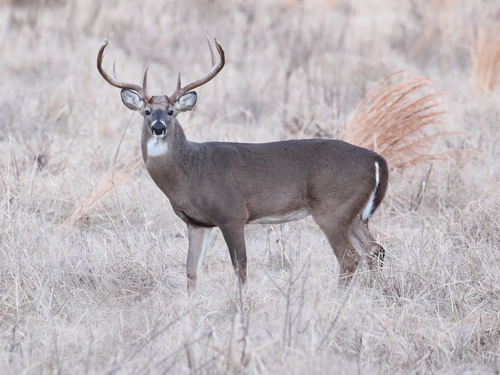
White-tailed Deer
The white-tailed deer gracefully roams North American forests, flaunting its distinctive white tail flash as an alarm signal. Adaptable and agile, this deer plays a vital role in its ecosystem, balancing predator-prey relations and aiding seed dispersal across its diverse habitats.
4-5 years
Lifespan
19.958 - 38.555 kg
Weight
Height: 61 - 81 cm
Size
Brown, White, Grey-Brown
Color
6 months
Age of Sexual Maturity
12-16 weeks
Age of Weaning
26 mph
Top Speed
Least Concern
Conservation Status
Stable
Population Trend
Distribution Range of the White-tailed Deer
Odocoileus virginianus, commonly known as the white-tailed deer, is native to North America. Its range extends from southern Canada throughout the United States, with the exception of some parts of the northern far west, and into Central America as far south as northern Peru.
White-tailed Deer's Habitat
Environmental Conditions
The white-tailed deer is highly adaptable and is found in a variety of habitats, including temperate forests, grasslands, and even semi-arid environments. It typically prefers areas that provide a mixture of dense cover for protection and open spaces for grazing. The climate in these regions can vary, but they generally support cold winters and warm summers, with the deer displaying a range of seasonal adaptations.
Ecological Niche
White-tailed deer play a critical role in their ecosystem as both herbivores and prey. They help control plant growth, and their grazing patterns can significantly influence the structure of vegetation communities. They are a crucial food source for predators such as wolves, mountain lions, and humans. They are also known for their ability to thrive in human-altered landscapes, such as agricultural fields and suburban areas, demonstrating a high level of ecological flexibility.
Copyright @ Nature Style Limited. All Rights Reserved.
 English
English